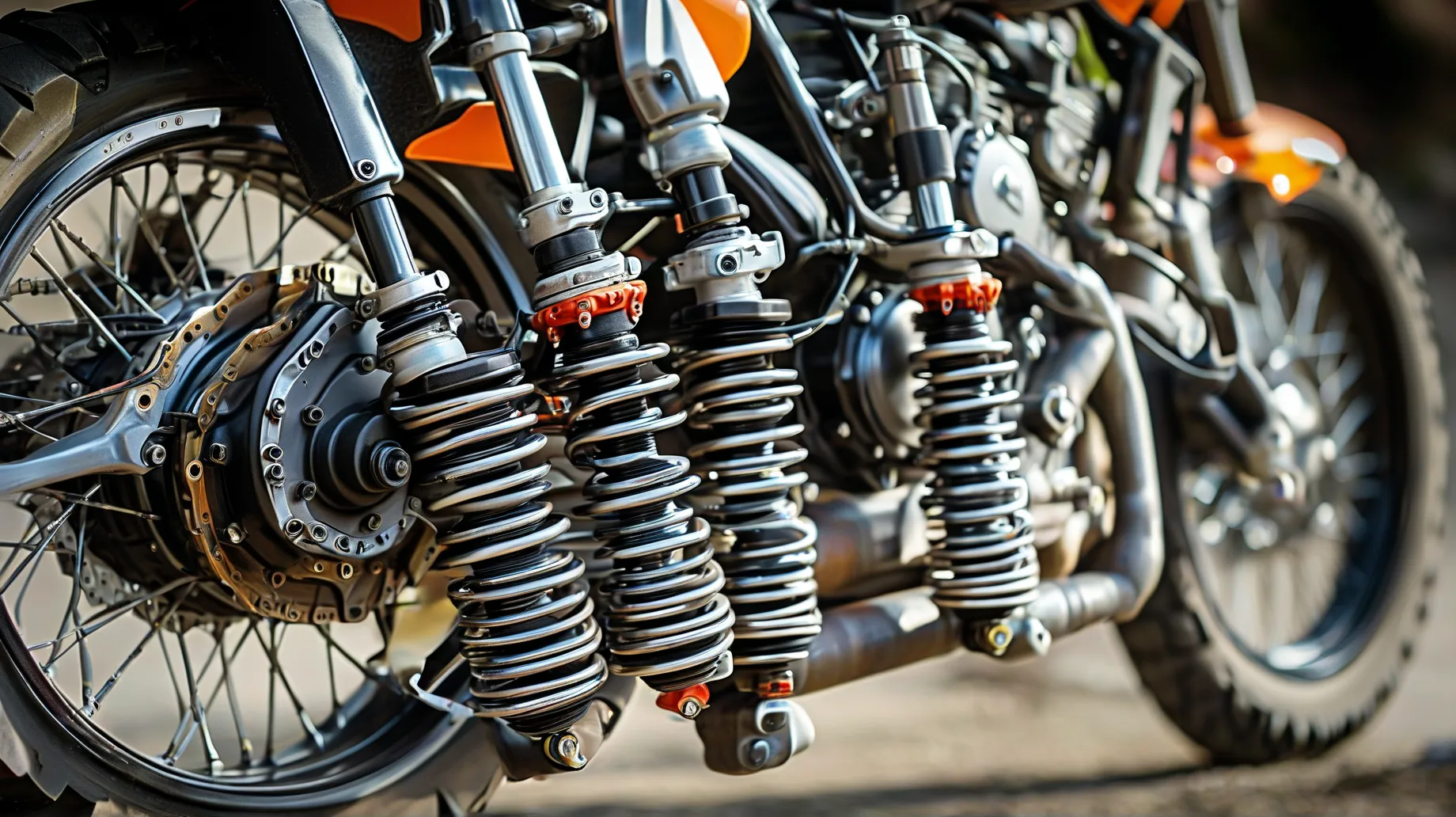Riding a motorcycle isn’t just about speed—it’s about the connection between rider, machine, and road. Central to this experience is a component often overlooked until it fails: motorcycle rear shocks. These critical suspension elements don’t just absorb bumps; they shape how your bike handles curves, responds to weight shifts, and maintains stability. Whether you’re navigating city potholes or carving mountain roads, understanding rear shocks can transform your ride from ordinary to extraordinary.
Why Rear Shocks Matter More Than You Think
Modern motorcycle rear shocks are engineered to balance three core functions: dampening vibrations, maintaining tire contact, and optimizing energy transfer. A study by the Motorcycle Industry Council (MIC) found that 68% of riders reported improved control after upgrading their rear suspension systems. This isn’t coincidental. High-quality shocks use precision-valved hydraulics or gas-charged systems to neutralize road irregularities, reducing fatigue on long rides while boosting cornering confidence.
For example, progressive-rate springs adjust stiffness based on compression, ensuring smooth responses to small bumps and firm support during aggressive maneuvers. Brands like Öhlins and WP Suspension have pioneered adaptive damping technologies that automatically adjust to riding conditions—proven in MotoGP circuits and now accessible for street bikes.
The Evolution of Rear Shock Technology (2025 Trends)
The 2025 market introduces innovations prioritizing smart adjustability and durability. Key advancements include:
-
AI-Powered Adaptive Damping
Systems like Showa’s Active Suspension Kit analyze road surfaces 1,000 times per second, adjusting damping force in real time. Trials by Cycle World showed a 40% reduction in chassis oscillations during sudden braking. -
Lightweight Composite Materials
Carbon-fiber shock bodies (used in Ducati’s 2025 Panigale V5) cut weight by 22% without sacrificing strength, enhancing agility for sport bikes. -
Modular Serviceability
Brands like KYB now offer user-rebuildable shock cartridges, extending service life by 60% compared to sealed units—a boon for adventure riders tackling remote terrain.
How to Choose the Right Rear Shocks for Your Bike
Selecting shocks isn’t one-size-fits-all. Consider these factors:
- Riding Style: Cruisers benefit from air shocks with adjustable preload (e.g., Harley-Davidson’s ARH system), while sport riders need high-pressure nitrogen shocks for rapid heat dissipation.
- Weight Distribution: Touring bikes with heavy luggage require shocks offering 20–30% more rebound damping than stock setups.
- Budget vs. Performance: Mid-range options like YSS Z-Series provide 80% of premium performance at half the cost, ideal for commuters.
A 2024 survey by RevZilla revealed that riders who matched shocks to their primary use case saw a 55% improvement in satisfaction over generic upgrades.
Maintenance Tips to Maximize Shock Lifespan
Even top-tier shocks degrade without care:
- Clean Regularly: Road grime accelerates seal wear. Use a soft brush and mild detergent every 500 miles.
- Check Sag: Static sag (rider-on vs. rider-off height) should be 25–35mm for street bikes. Incorrect sag strains springs and reduces traction.
- Monitor Fluid Health: Cloudy or gritty oil indicates internal wear. Most manufacturers recommend fluid changes every 15,000 miles.
Pro Tip: Install shock boots to protect rods from debris—a $20 upgrade that can prevent $200 rebuilds.
Debunking Common Myths About Rear Shocks
- “Stiffer is always better”: Overly stiff shocks reduce tire grip on uneven surfaces, increasing crash risk. Proper tuning balances compliance and control.
- “Stock shocks last forever”: Factory shocks typically degrade after 20,000 miles, losing up to 40% of damping efficiency (source: Race Tech Suspension Handbook).
- “Adjustments are only for pros”: Basic preload tweaks take minutes but dramatically affect comfort—critical for riders with passengers or cargo.
The Bottom Line
Your motorcycle’s rear shocks are the silent guardians of ride quality and safety. As 2025 technologies blur the line between mechanical and electronic systems, riders now have unprecedented control over their suspension’s behavior. Whether you’re chasing lap times or exploring backroads, investing in the right shocks—and maintaining them properly—ensures every mile feels precisely how motorcycling should: exhilarating, controlled, and uniquely yours.
For deeper insights, consult trusted resources like the Society of Automotive Engineers (SAE) papers on suspension dynamics or manufacturer whitepapers from brands like Ohlins Racing AB.




Leave a Reply